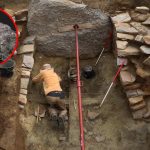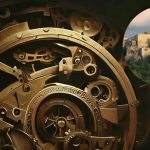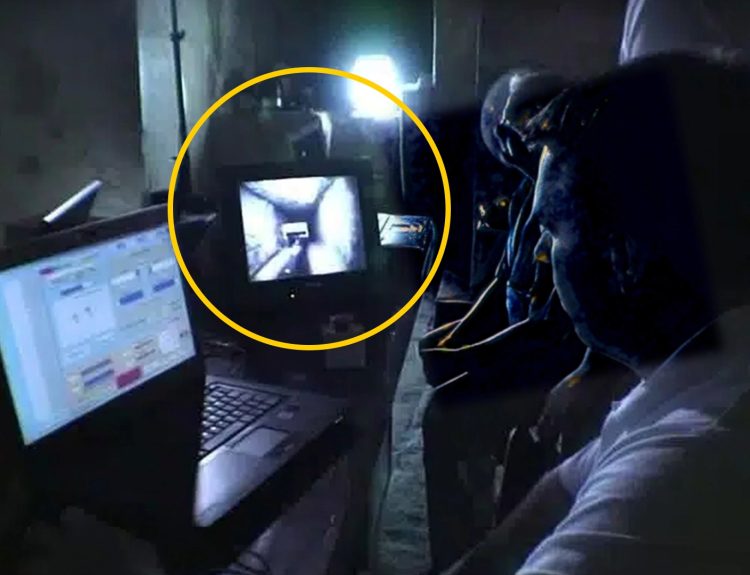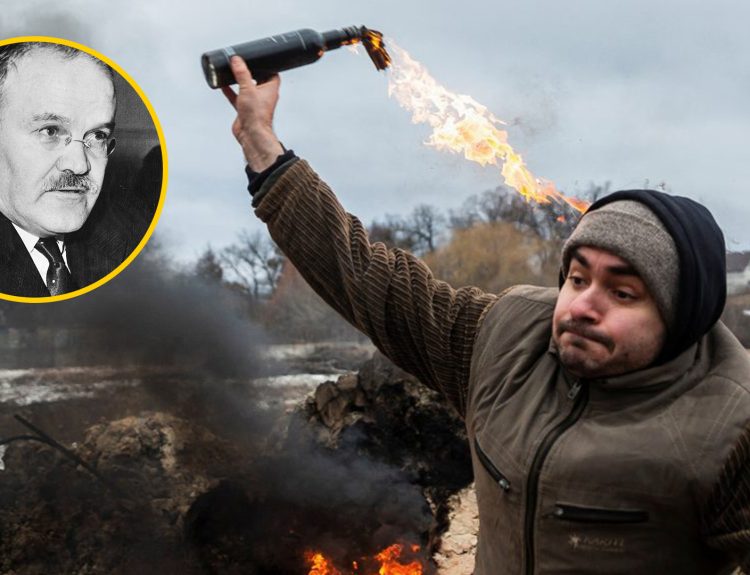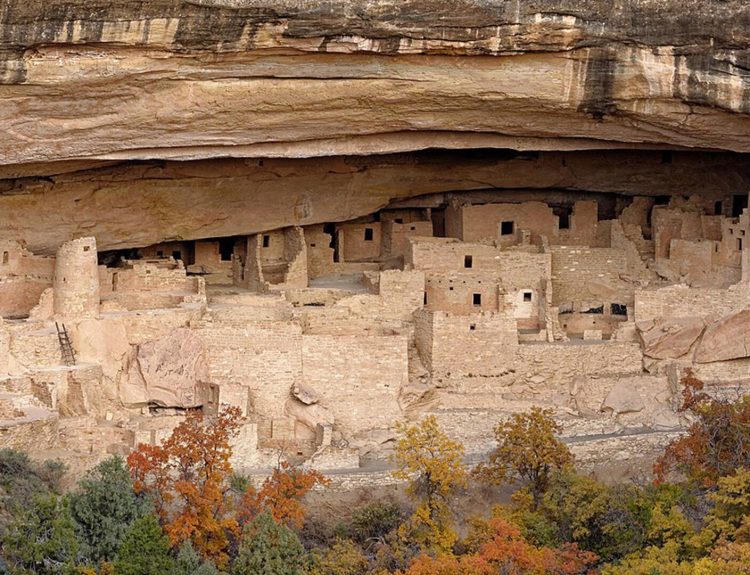When we think of historic discoveries, it might be easy to picture an Indiana Jones-like archaeologist with a fistful of cleverly deciphered ancient documents in one hand and a pickaxe in the other. However, not all significant and historic discoveries have been made by doctorate-level archaeologists, nor have the discoveries been known, yet lost, treasures. Take the story of China’s famed TerraCotta Warriors, for example. This massive collection of life-sized TerraCotta clay soldiers, warriors, horses, and more, were discovered quite by accident by a small group of unlikely discoverers – farmers who were simply trying to dig a well to irrigate their fields.
A Surprising Find Right Under Their Feet
This part of the story – the discovery of the TerraCotta Warriors – is a fairly recent one. It took place in 1974 when farmers in the Xian region of China were lamenting the drought-like conditions that threatened their crops.
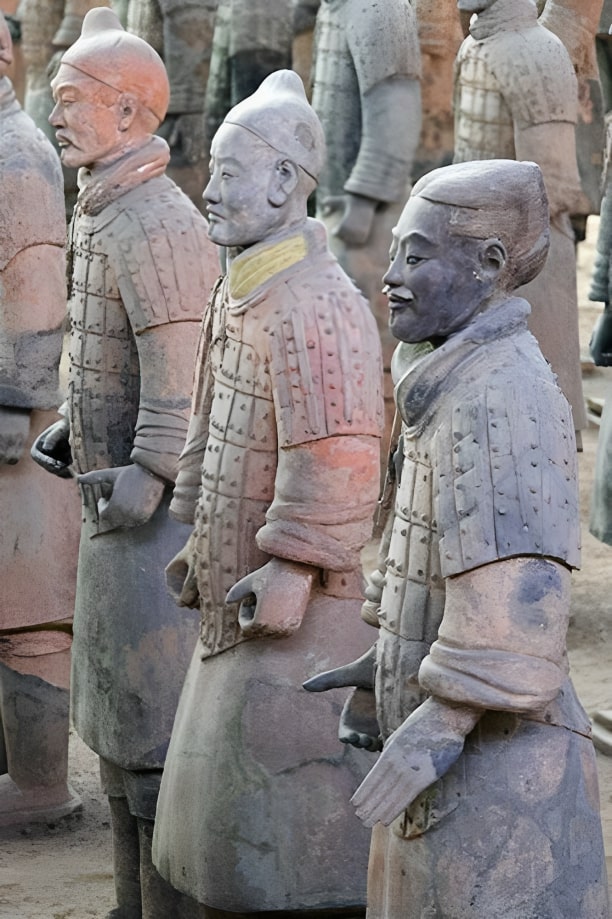
Seven of them decided to do something about the lack of water. By digging a communal well, they thought, they could supply enough water to irrigate all their fields.
Time Capsules in the Earth: Unveiling History Through Soil and Sediment
According to the account of the day, one of the Chinese farmers, Yang Zhifa, hit something hard about three feet below the surface. He pulled out some bronze tools and clay artifacts. He called the others over and, together, they unearthed two human heads fashioned out of TerraCotta. The men may have been simple farmers, but they knew that they had found something significant.
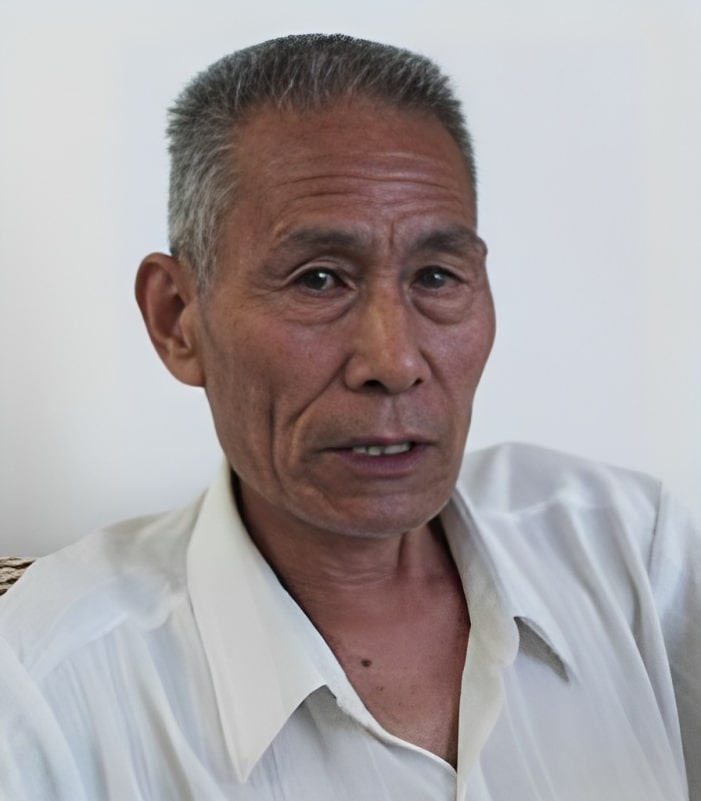
The farmers reached out to a nearby museum and their message was passed along to Zhao Kangmin, an archaeologist employed at the museum. Normally, Zhao would have dismissed reports of old artifacts discovered in a farm field, but the area where the farmers made their find piqued his interest. This was the area where researchers believed the tomb of China’s first emperor could be located.
The First Emperor of China
Between 221 and 210 BC, Qin Shi Huang, the founder of the Qin dynasty, served as the emperor of China. One of the most significant figures in Chinese history, Qin Shi Huang ascended to the throne of the Qin state when he was just 13 years old and successfully united China’s various states. At that time, he declared himself emperor … the first one in China’s history.
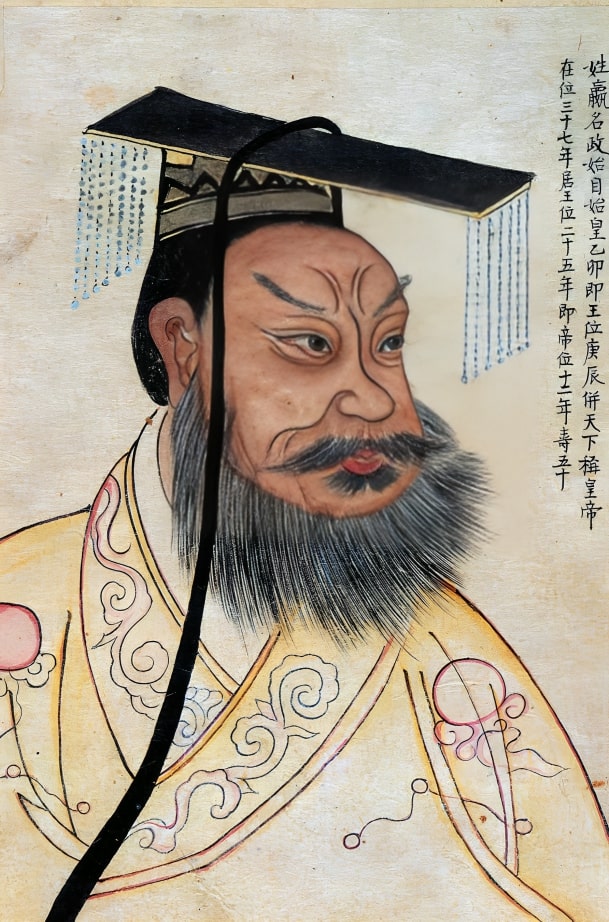
Among his many achievements as emperor, Qin Shi Huang promoted unity by standardizing several aspects of life, from weights and measures to currency system, to writing, and even the width of cart wheels. Qin Shi Huang had portions of the Great Wall of China linked together to strengthen the nation’s defense system.
Longing for Immortality
Qin Shi Huang feared death and sought out remedies, medicines, and elixirs to extend his life and, he hoped, grant him immortality. He commissioned the construction of a massive mausoleum for himself. The mausoleum took roughly 38 years to complete and required a workforce of more than 700,000 workers.
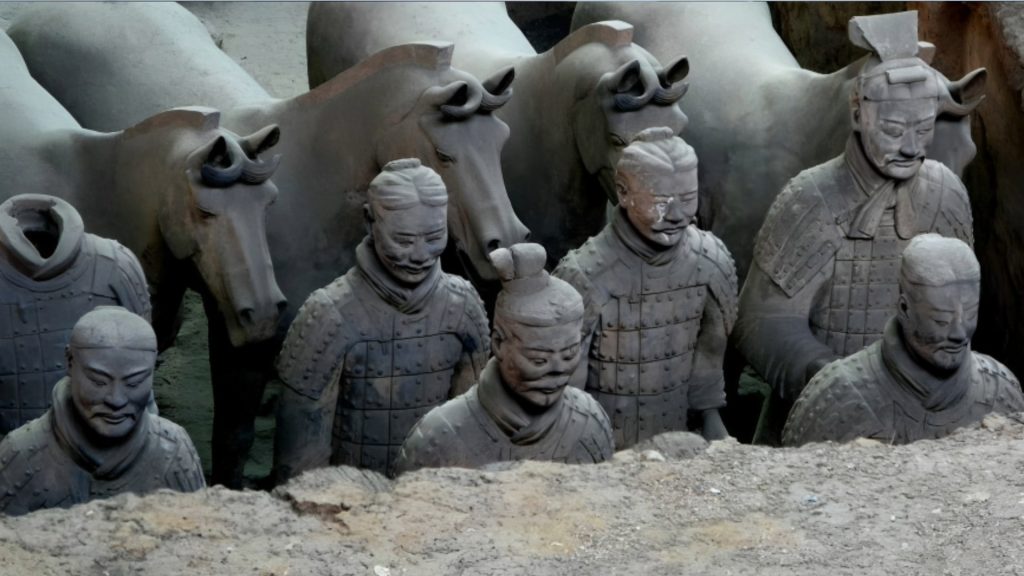
The emperor wanted to ensure his protection in the afterlife. It was not uncommon for rulers in Ancient China to be buried with a few statues to act as guards over the tomb, but Qin Shi Huang took this to a whole new level. He ordered a slew of artists to craft him an entire army of life-sized warriors and guards out of TerraCotta.
Excavations in Secret
When Zhao Kangmin began excavating the site of the farmers’ field, he and a colleague unearthed several figures made of TerraCotta. But this was 1974 and Chairman Mao’s “Cultural Revolution” still had a hold on the country. The archaeologists feared that the Red Guard would seize and destroy the 2,000-year-old, historically important discoveries.
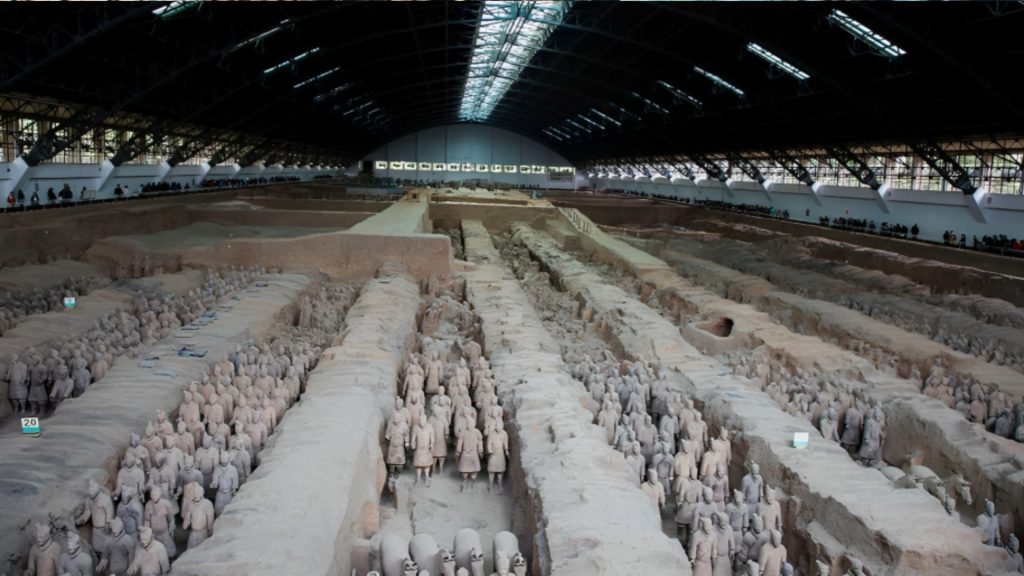
Although Zhao planned to keep the excavation under wraps until he was more certain about his discoveries. That plan was shattered when a young, overzealous reporter happened upon the site and published an article about it in Xinhua, China’s state-run media agency. Zhao braced for the government to shut down the dig. He was surprised at what happened next.
China’s About-Face
The purpose of China’s Cultural Revolution was to reinforce communism by removing all vestiges of the past, especially artifacts and elements that reflected China’s capitalist past and its traditional heritage. Zhao was right to be fearful that the more than 500 TerraCotta figures he had thus far unearthed would be smashed by the soldiers of the Red Guard.

Government officials from Beijing, however, were amazed and impressed with the unexpected discovery. The site was declared an important archaeological site that required both protection and additional manpower.
The Tomb of Qin Shi Huang
As expected, the discovery of the TerraCotta Warriors also led to the discovery of Qin Shi Huang’s tomb. While work is ongoing to uncover the TerraCotta Statues, the Chinese government made the decision to leave the tomb unopened, out of respect for China’s first emperor.

Besides, the site is so vast and rich with important artifacts that it will keep archaeologists busy for years. To date, only about one percent of the complex has been excavated in the fifty years since its discovery. In that time, more than 8,000 TerraCotta Soldiers have been unearthed. Their sheer number is staggering, but it becomes even more amazing when we study the actual figures.
Individual Masterpieces
Each one of the TerraCotta Soldiers is unique. No two are the same. The clothing, facial expressions, poses, hairstyles, armor, and hand positions of each are different. When you consider that each statue stands about six feet high and weighs well over 500 pounds, you can see that it must have taken an army of artists to create this inanimate army.

Qin Shi Huang spared no detail in his desire to create a lifelike army. There are infantrymen, archers, generals, grooms, and cavalry men. In addition to the soldiers, more than 600 TerraCotta horses have been found, as well as about 100 TerraCotta chariots, complete with riders. The human figures are arranged by rank and, interestingly, by height. The generals are taller than the officers who are taller than the infantrymen.
Is the Tomb Rigged with Ancient Booby Traps?
There are plenty of people who believe that the tomb of Qin Shi Huang has built-in booby traps to protect the emperor in the afterlife. It could be, however, that this is merely a legend. After all, historians have yet to find any textual evidence from Qin Shi Huang’s time that mentions deadly booby traps.

The source of the booby trap legend comes from the writings of Sima Qian, an ancient Chinese historian. Sima Qian was not a contemporary of Qin Shi Huang. He lived about a century after the emperor was buried yet he penned one of the only remaining descriptions of the tomb. He wrote, “Craftsmen were ordered to make crossbows and arrows primed to shoot at anyone who enters the tomb.”
Something More Deadly than Giant Rolling Boulders
The Indiana Jones movies have us believing that ancient temples and tombs are rigged with trap doors, swinging blades, and giant rolling boulders, but the tomb of Qin Shi Haung may contain something more deadly … liquid mercury. Sima Qian wrote that “Mercury was used to simulate the hundred rivers, the Yangtze and Yellow River, and the great seas, and set to flow mechanically.”
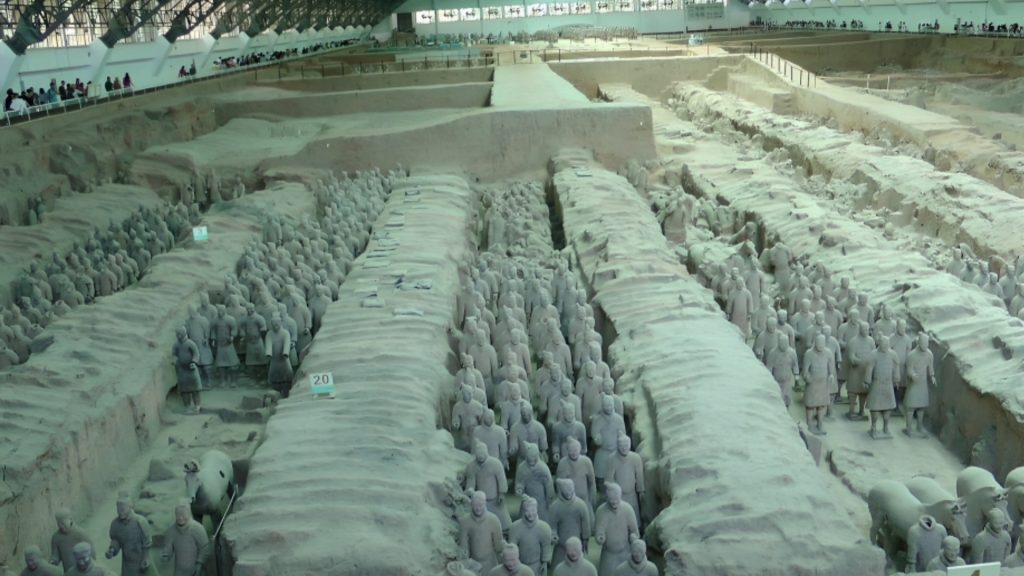
The river of mercury is a plausible story. Scientists have detected high levels of mercury in the area surrounding the tomb. Plus, there are written accounts that tell us that Qin Shi Huang actually drank mercury because he thought it was an elixir of immortality. In all likelihood, his mercury beverage had the opposite effect. It probably hastened his death.
Are Archaeologists Too Scared of Potential Booby Traps to Open the Tomb?
The actual burial tomb or mausoleum of Qin Shi Huang has not been opened since the day it was sealed roughly 2,200 years ago. Is this because the archaeologists who are currently excavating the site are too afraid of potential booby traps to open the tomb? Not at all. Most researchers dismiss the story of crossbows and arrows are merely legends.
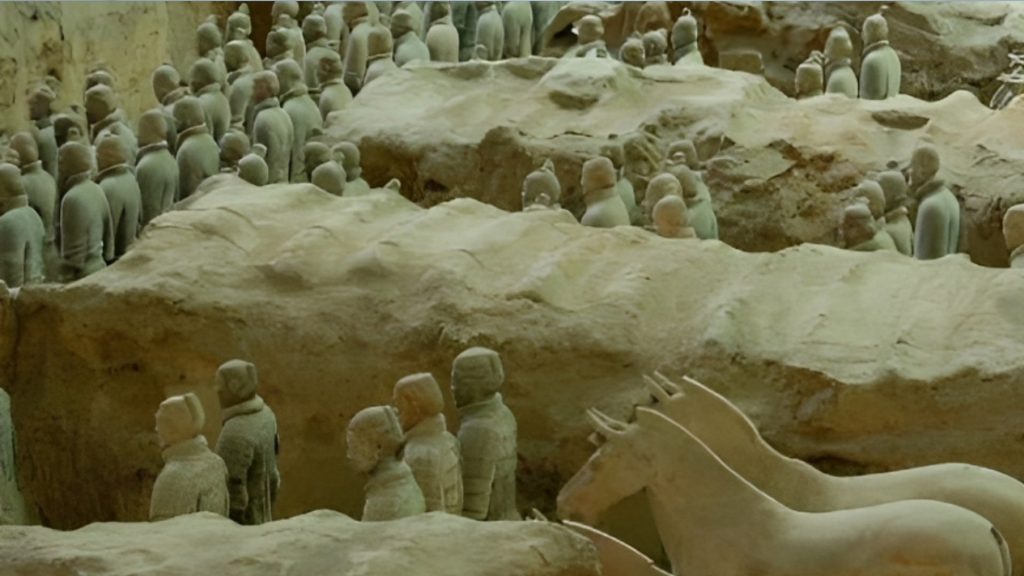
The river of mercury, however, is a different story. But that is not the reason why the tomb remains sealed. The team of archaeologists, together with officials from the Chinese government, have decided that opening the tomb of Qin Shi Huang could cause damage to the mausoleum. Everyone agrees that the site is such a valuable treasure of Chinese history that it deserves to be protected.
A Well-Planned Out Necropolis
Whether or not the tomb of Qin Shi Haung contains booby trap arrows or pools of mercury, researchers can clearly see that the site, or necropolis, was carefully laid out. The arrangement of the necropolis almost exactly mimics the layout of Xianyang, the capital city of Qin Shi Huang’s empire. The actual burial site of the emperor, found in the southwest corner of the site, is a 250-feet tall, pyramid-shaped structure.

X, the social media site formerly known as Twitter, has gone wild about a strange, saucer-shaped tomb that is made out of TerraCotta and looks eerily like the X-box logo. Because the structure looks like TerraCotta and dates back to about 220 BC, during the Qin dynasty, rumors have swirled that this was where Qin Shi Huang is buried. However, this structure is not located in the Xian region of China. Studies are still ongoing to try to discover the purpose of this unusual find. One popular theory is that this was made as a decoy to throw off would-be tomb robbers searching for Qin Shi Huang’s tomb.
A National Treasure
Today, the TerraCotta Army is not only one of the most significant archaeological discoveries in the world, but it has become a national treasure of China. The TerraCotta Army and the tomb of Qin Shi Huang are unprecedented in their scale and complexity. The site was recognized as a UNESCO World Heritage Site in 1987.
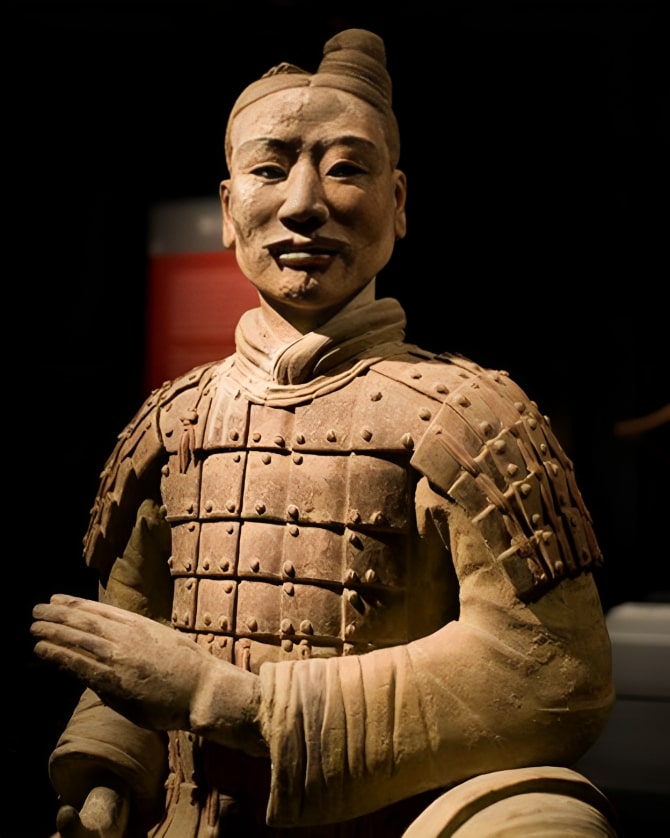
The accidental discovery of the TerraCotta Warriors gave the people of China a burst of national pride. The discoveries have proven to be invaluable for giving researchers insight into the art, culture, burial practices, and military technology of Ancient China and has given visitors a glimpse into the rich past.


